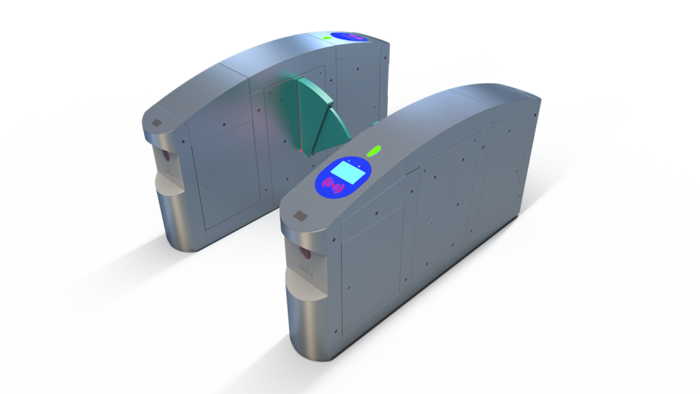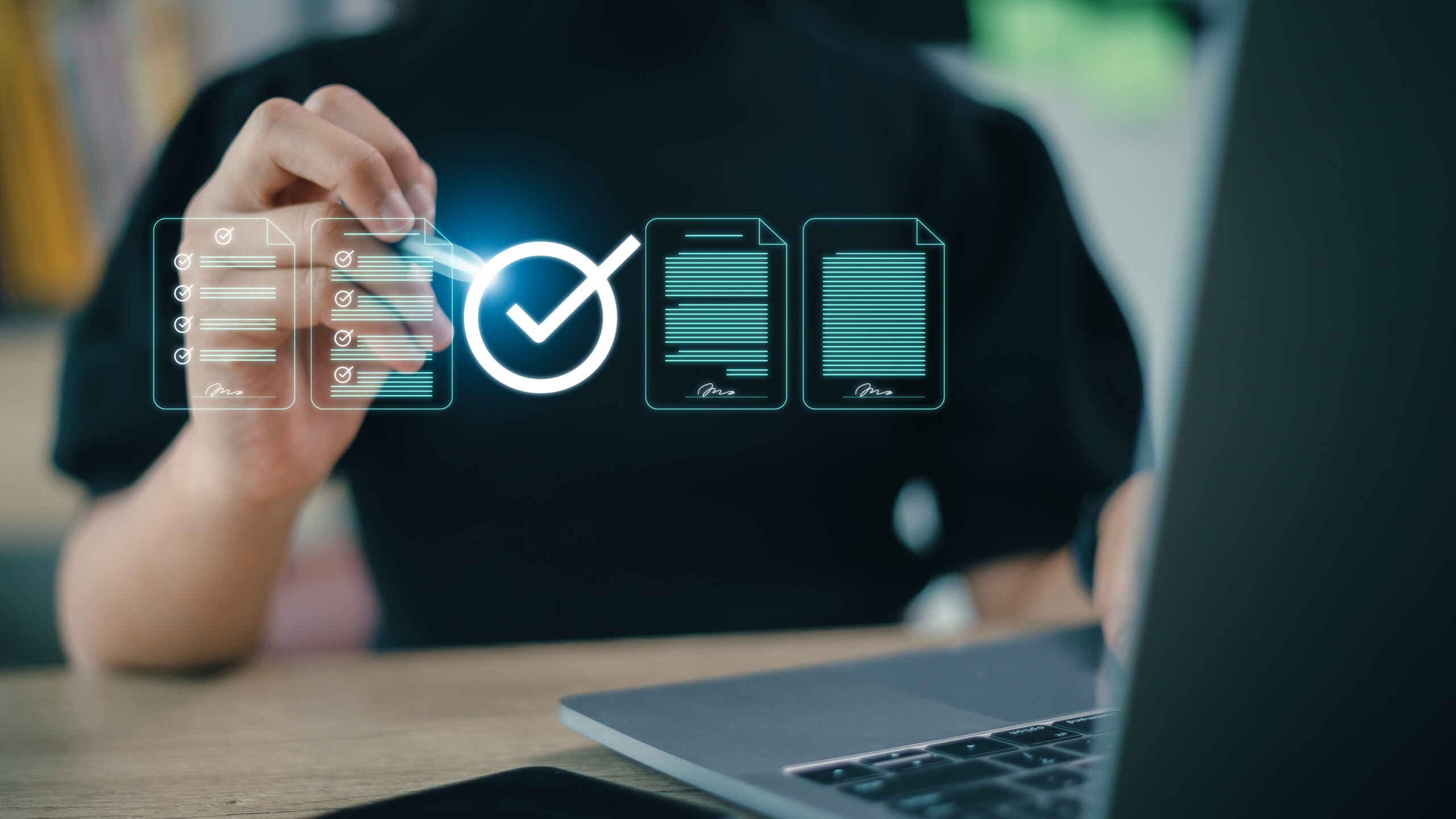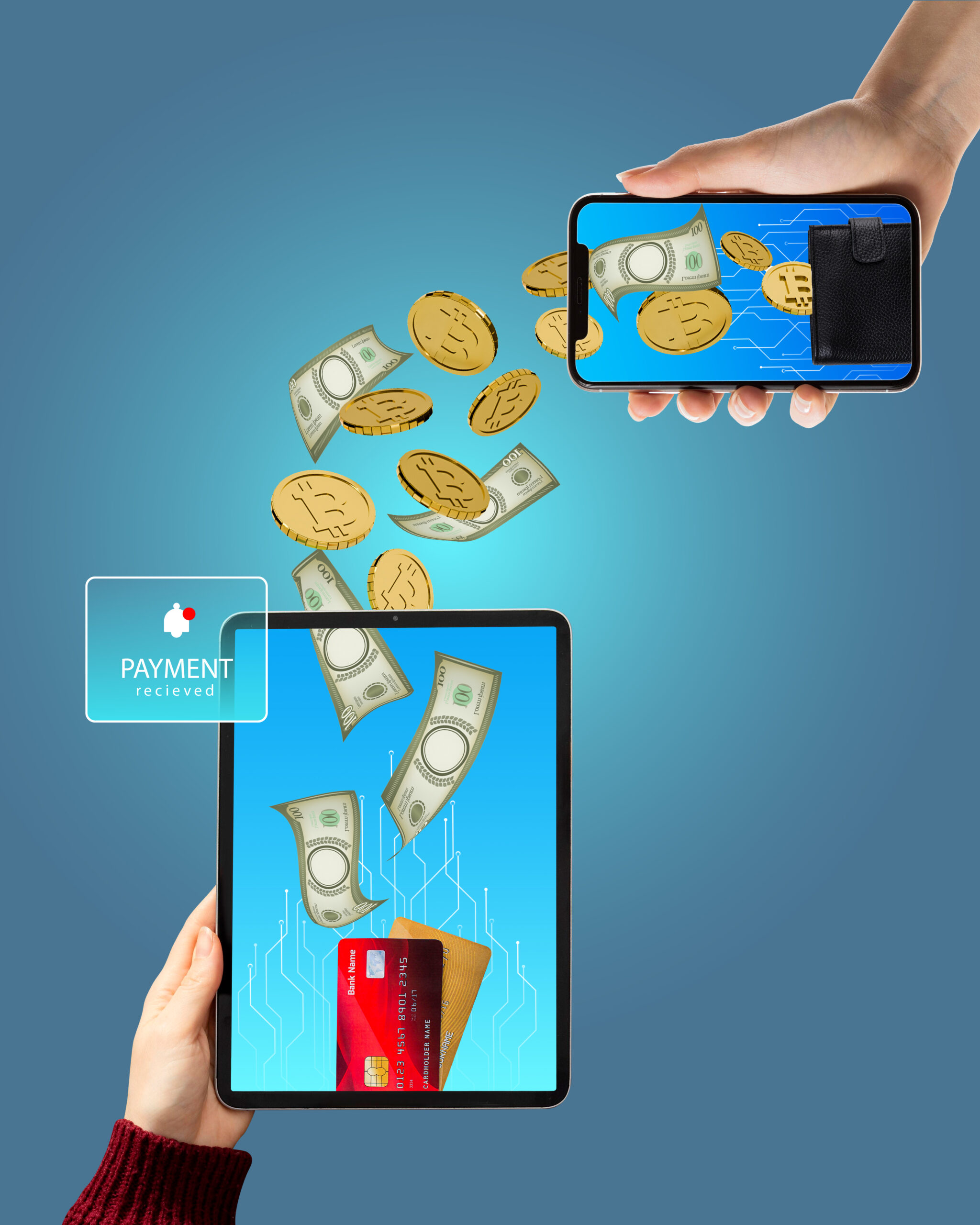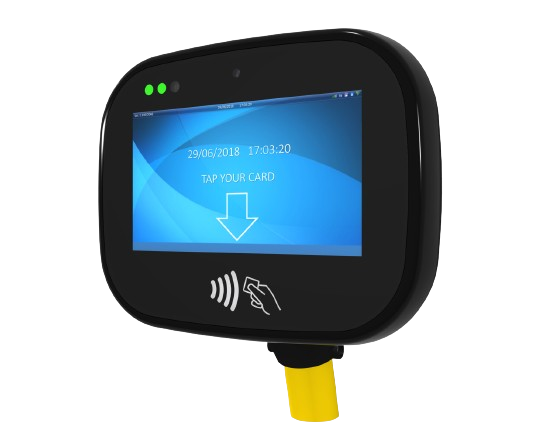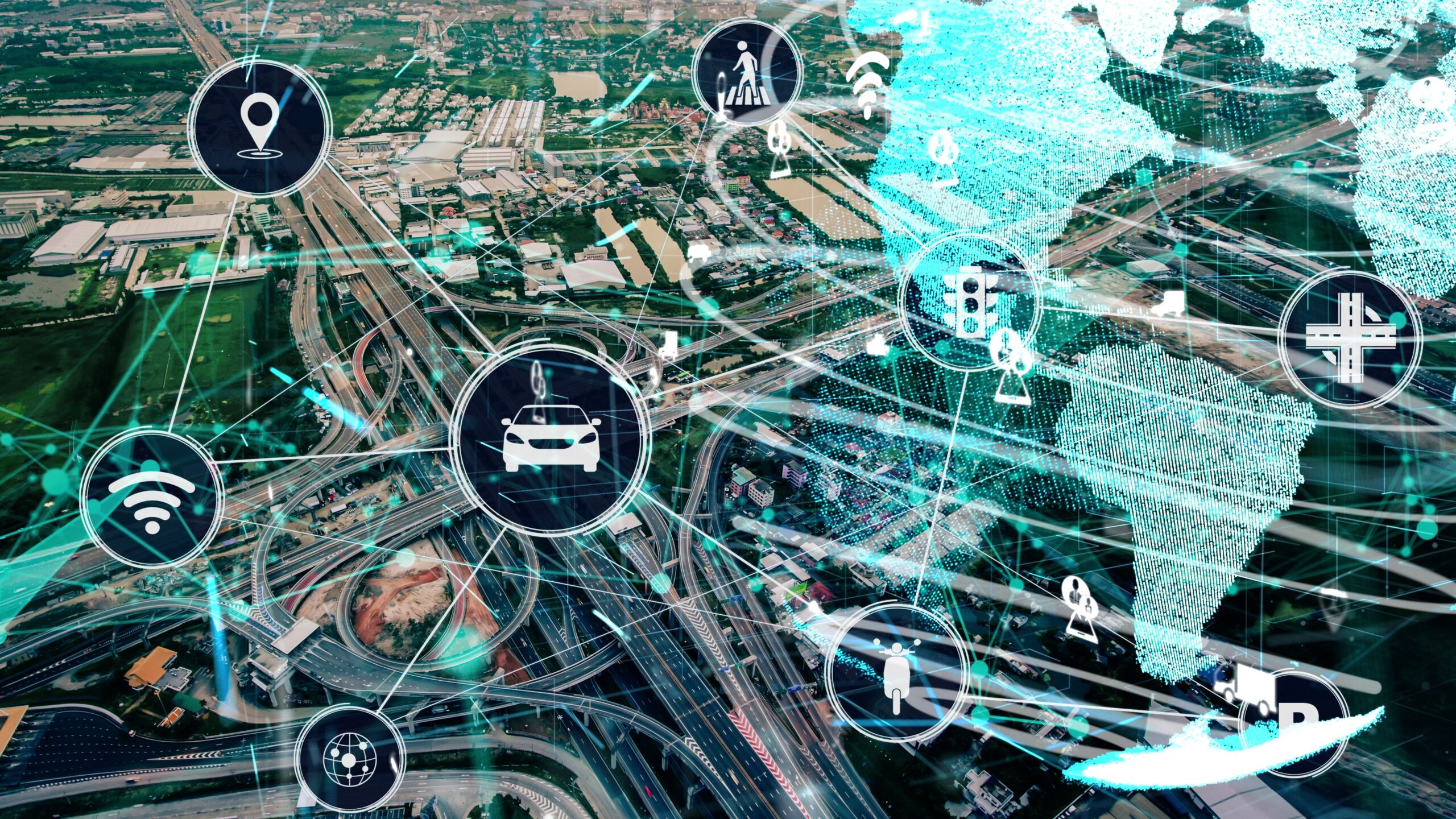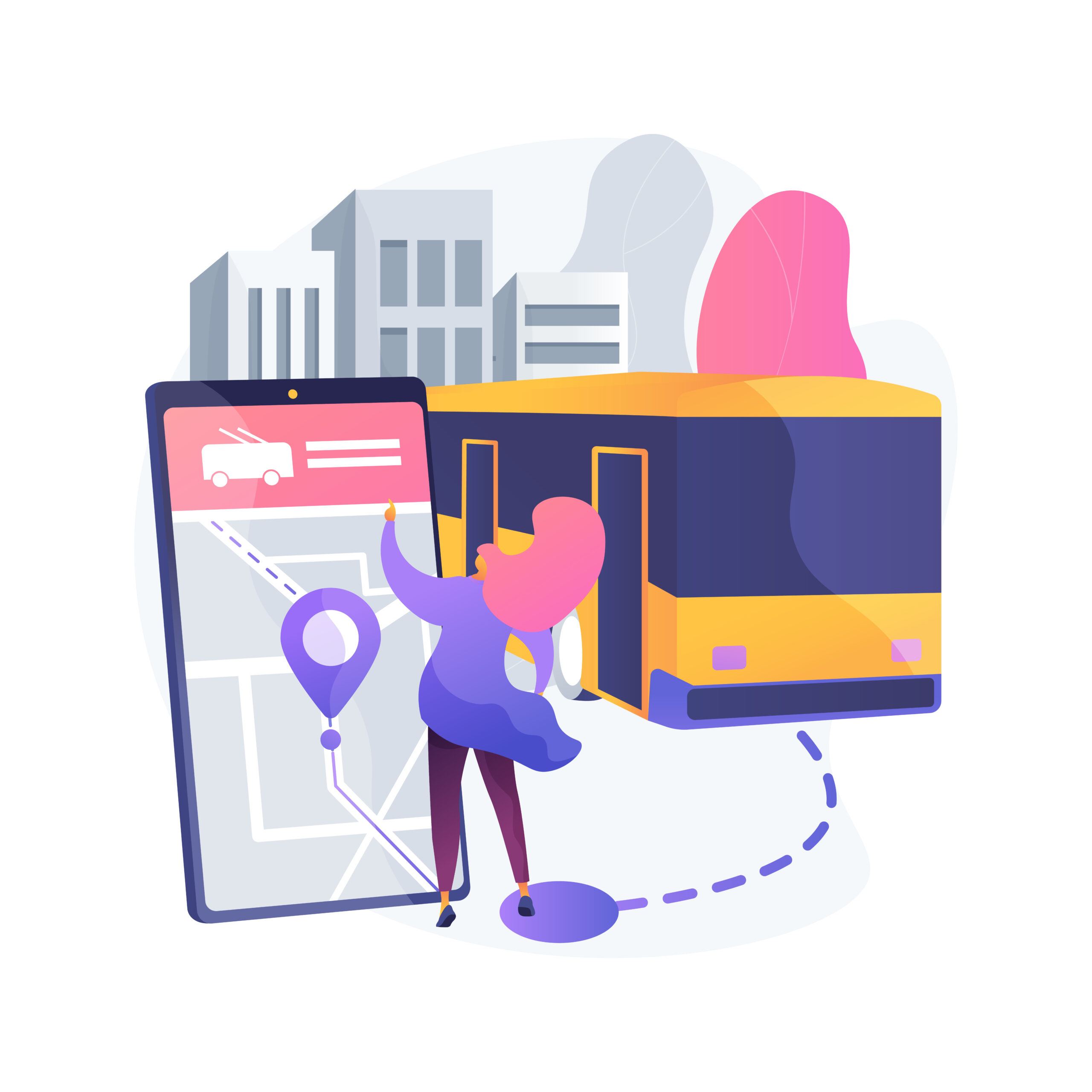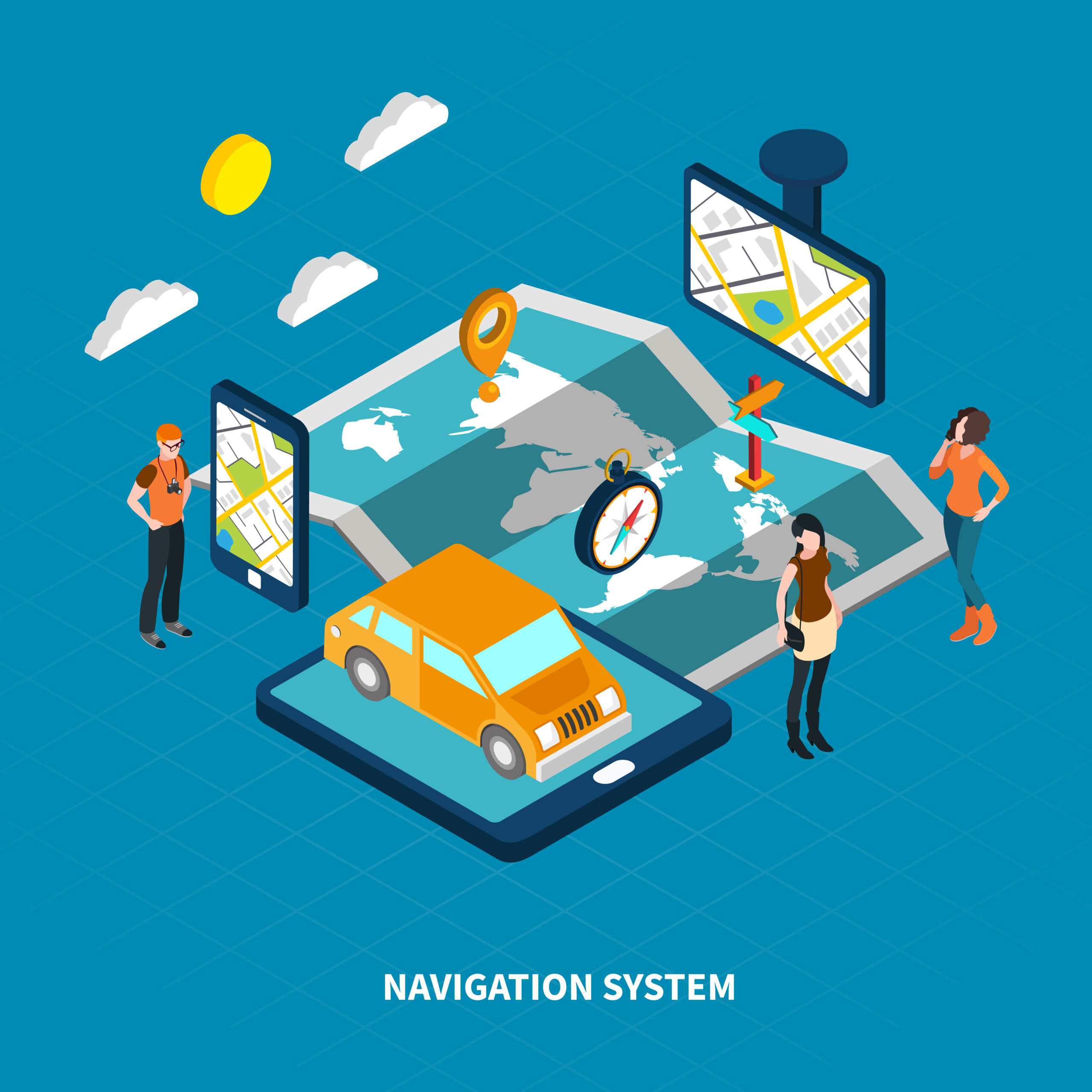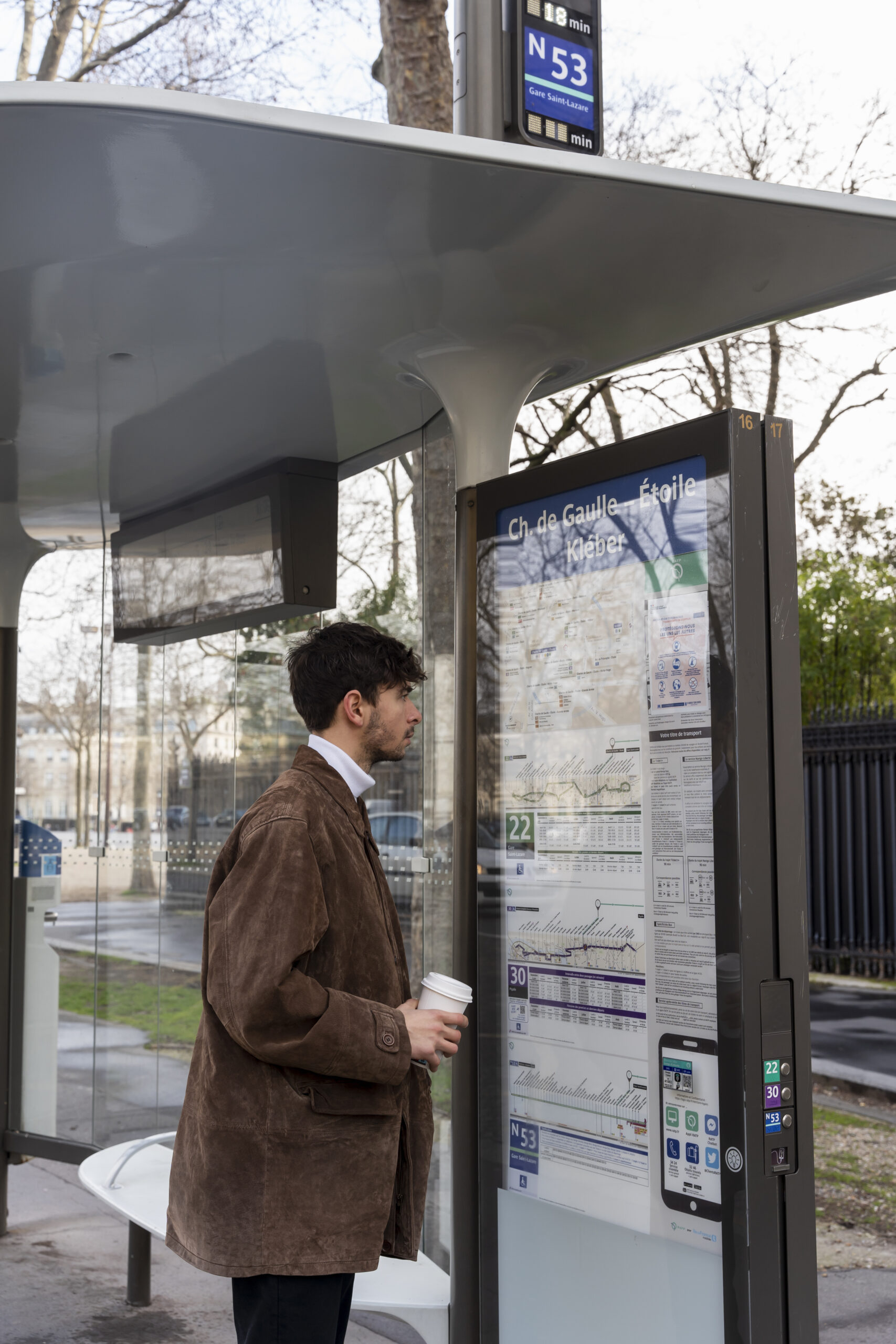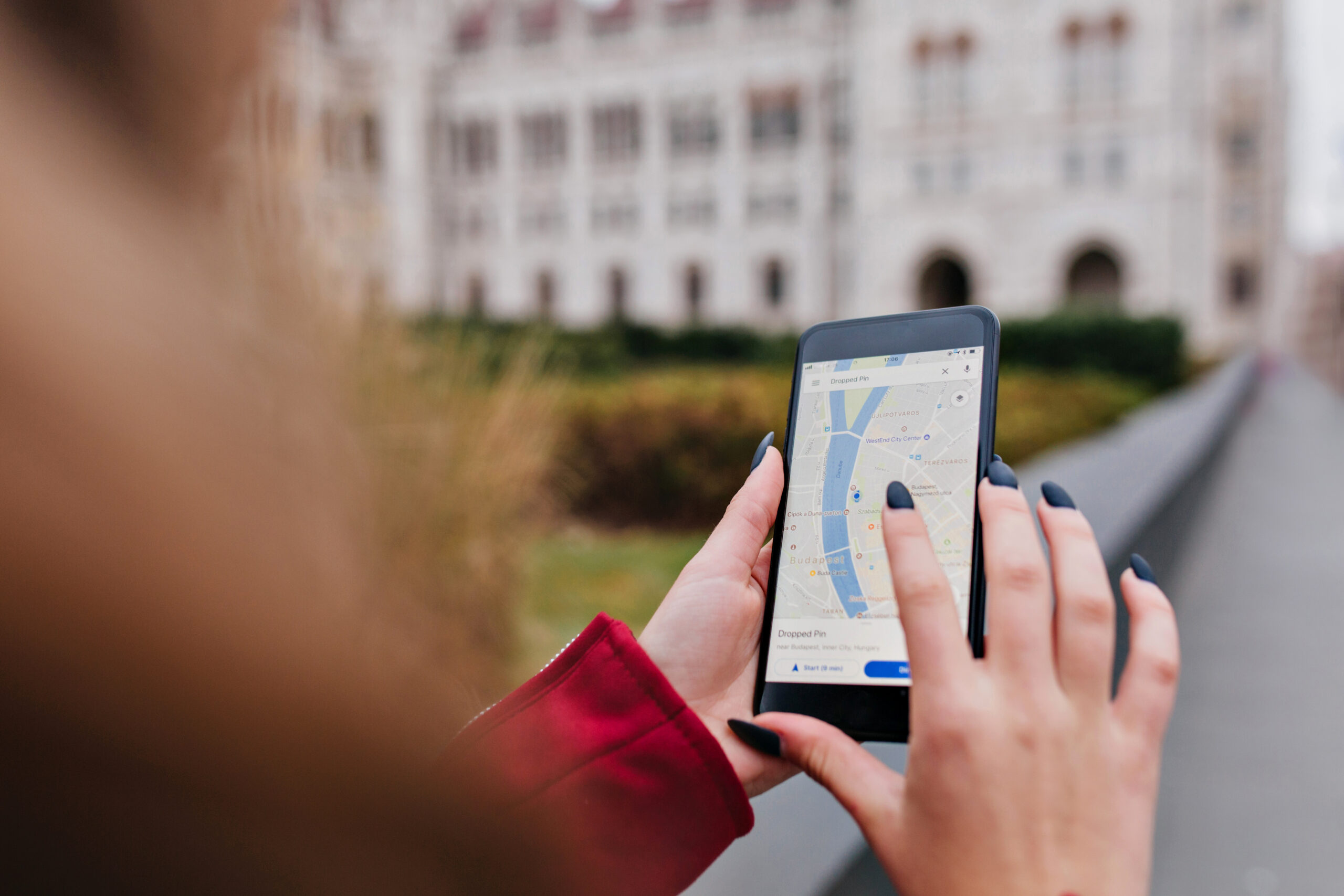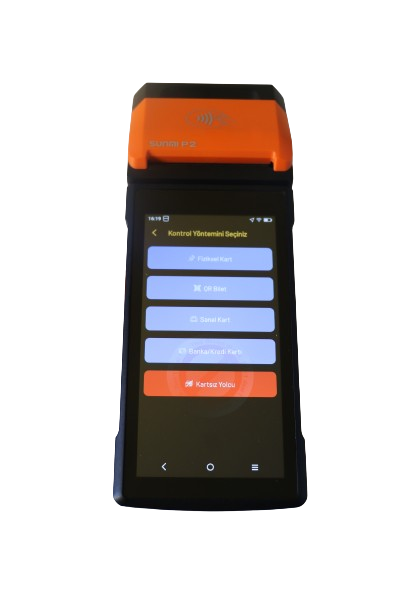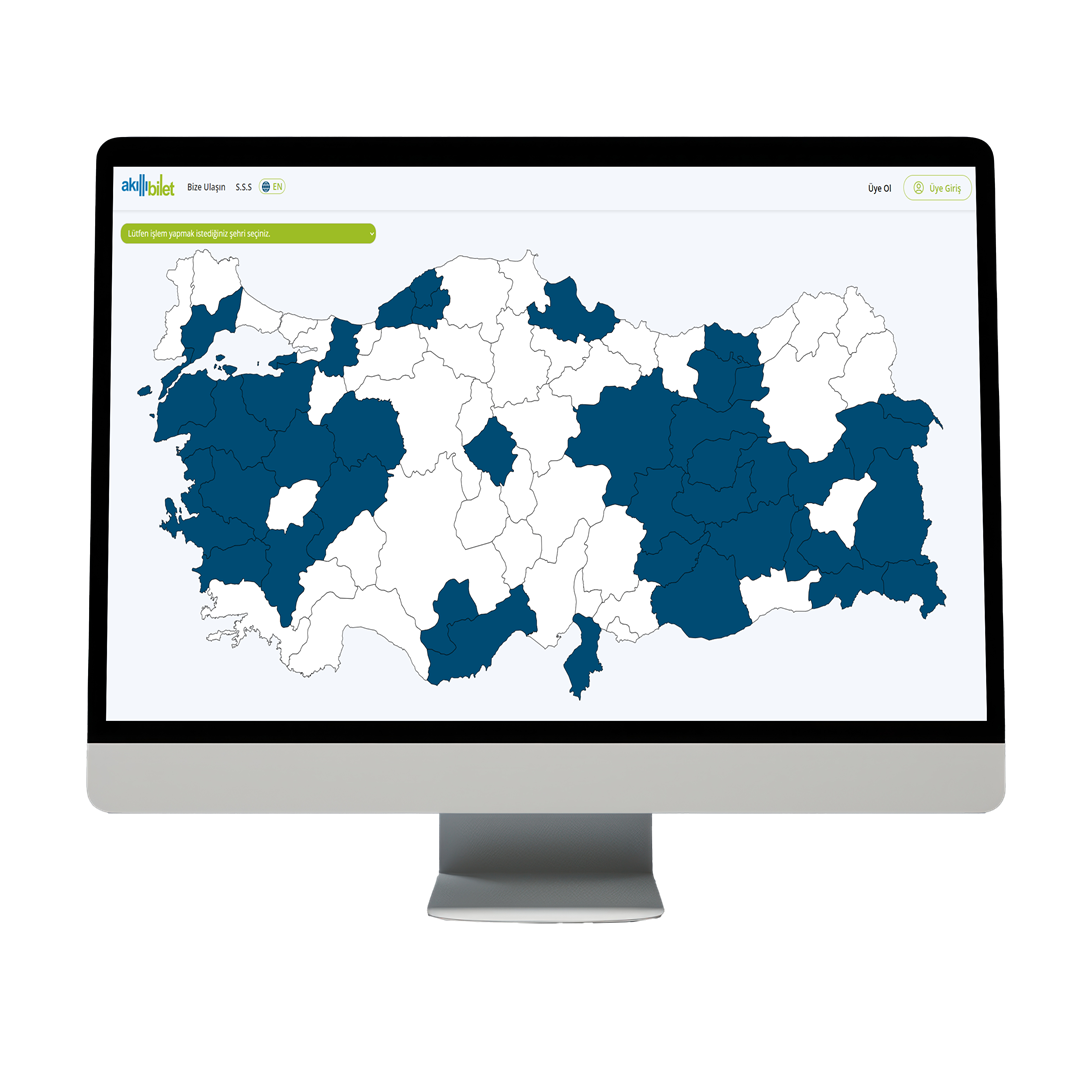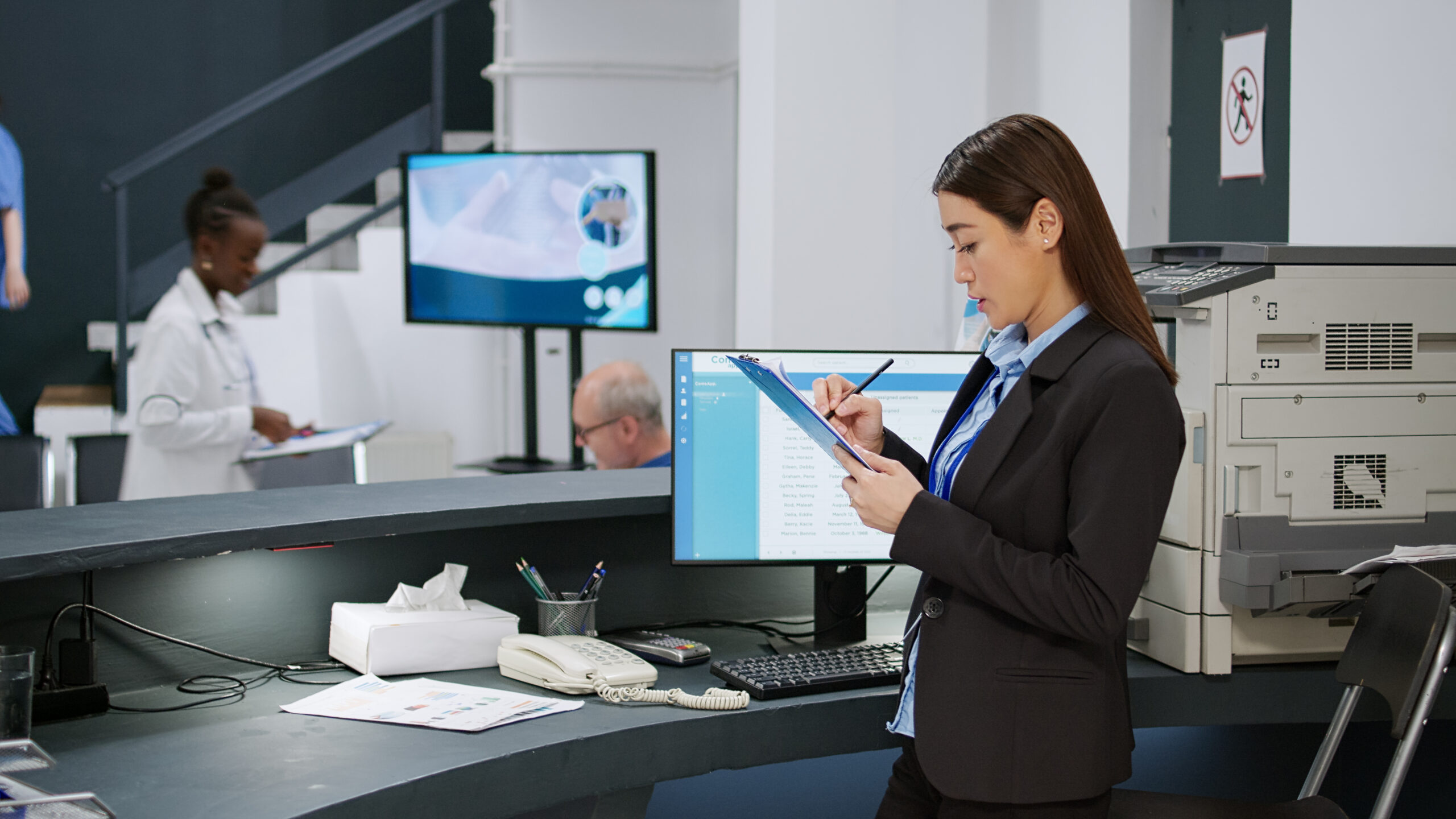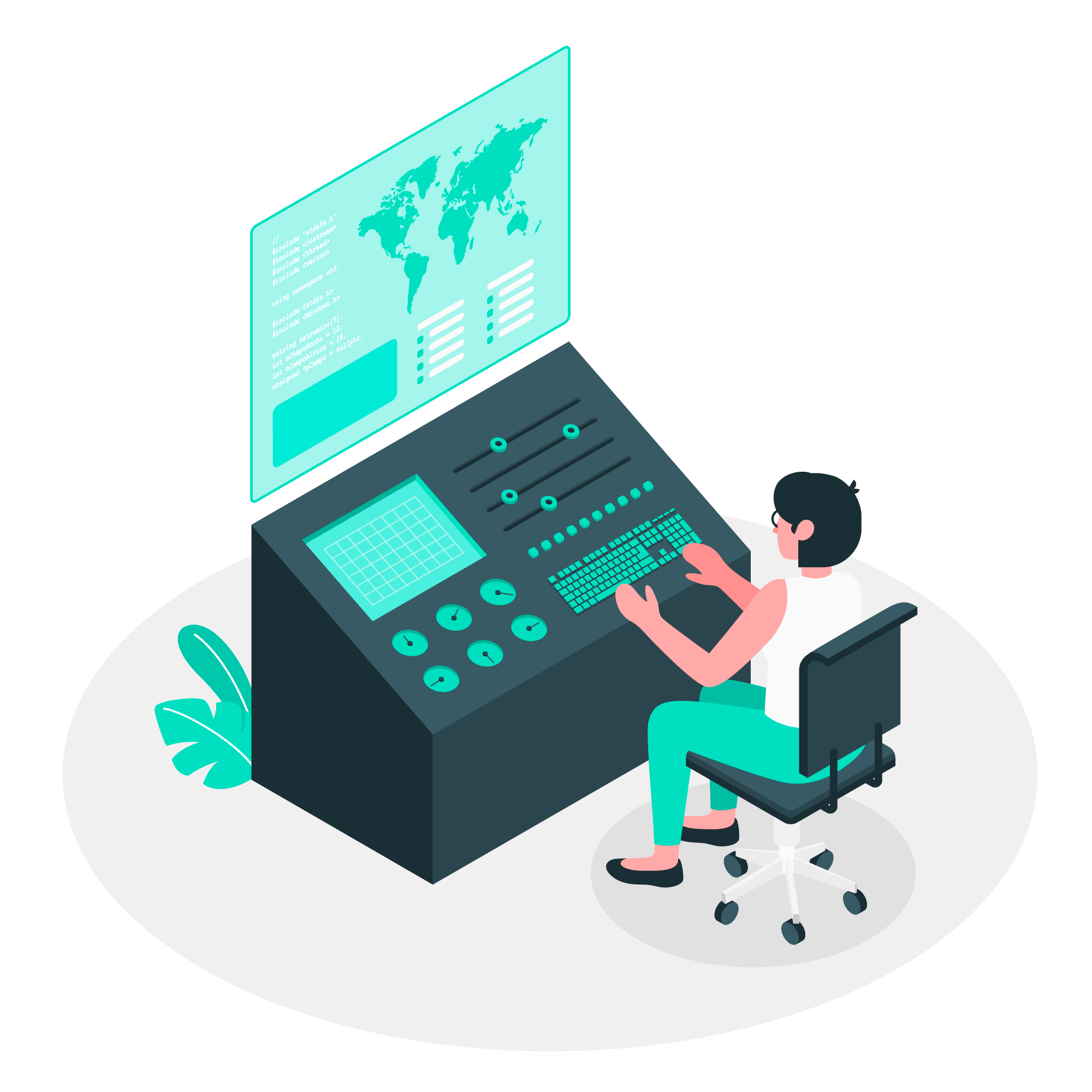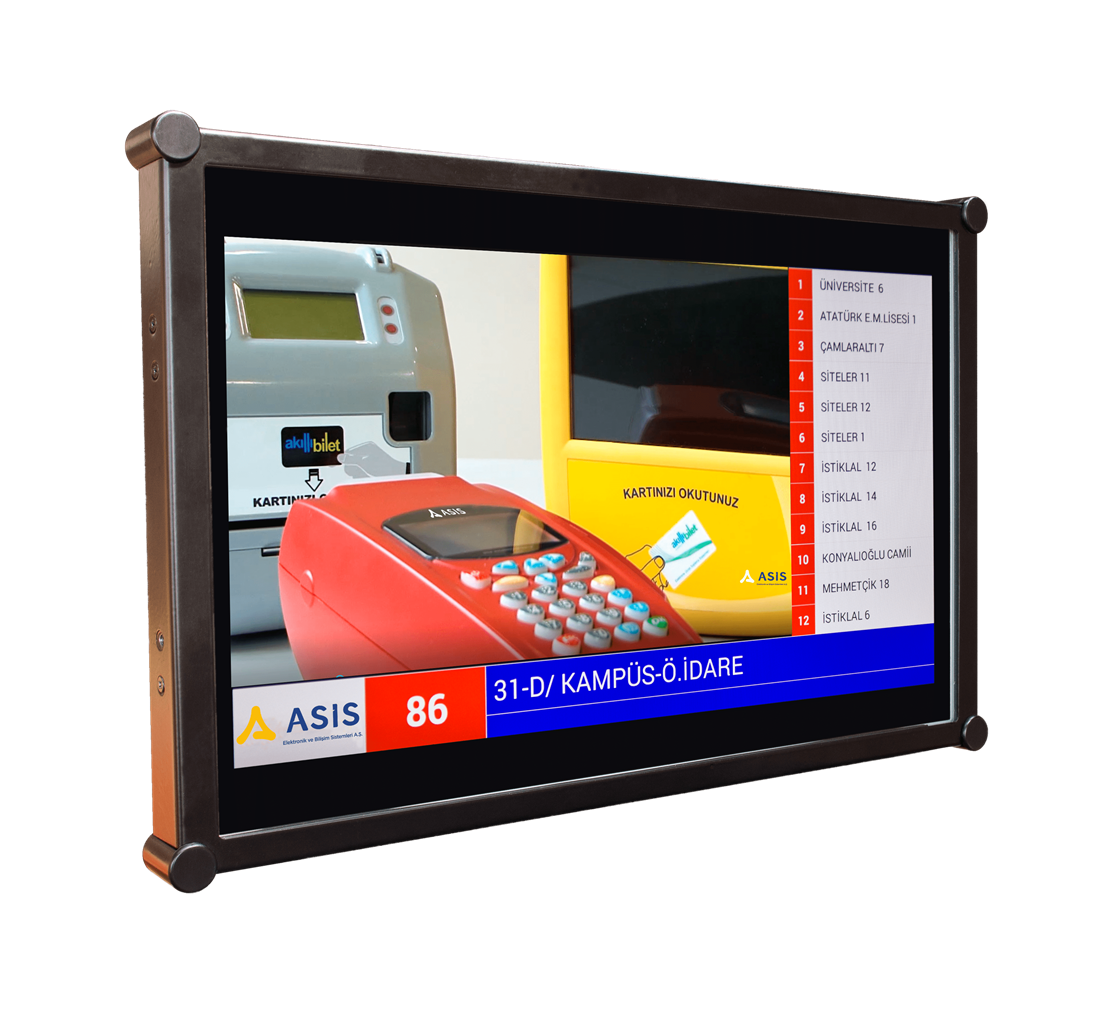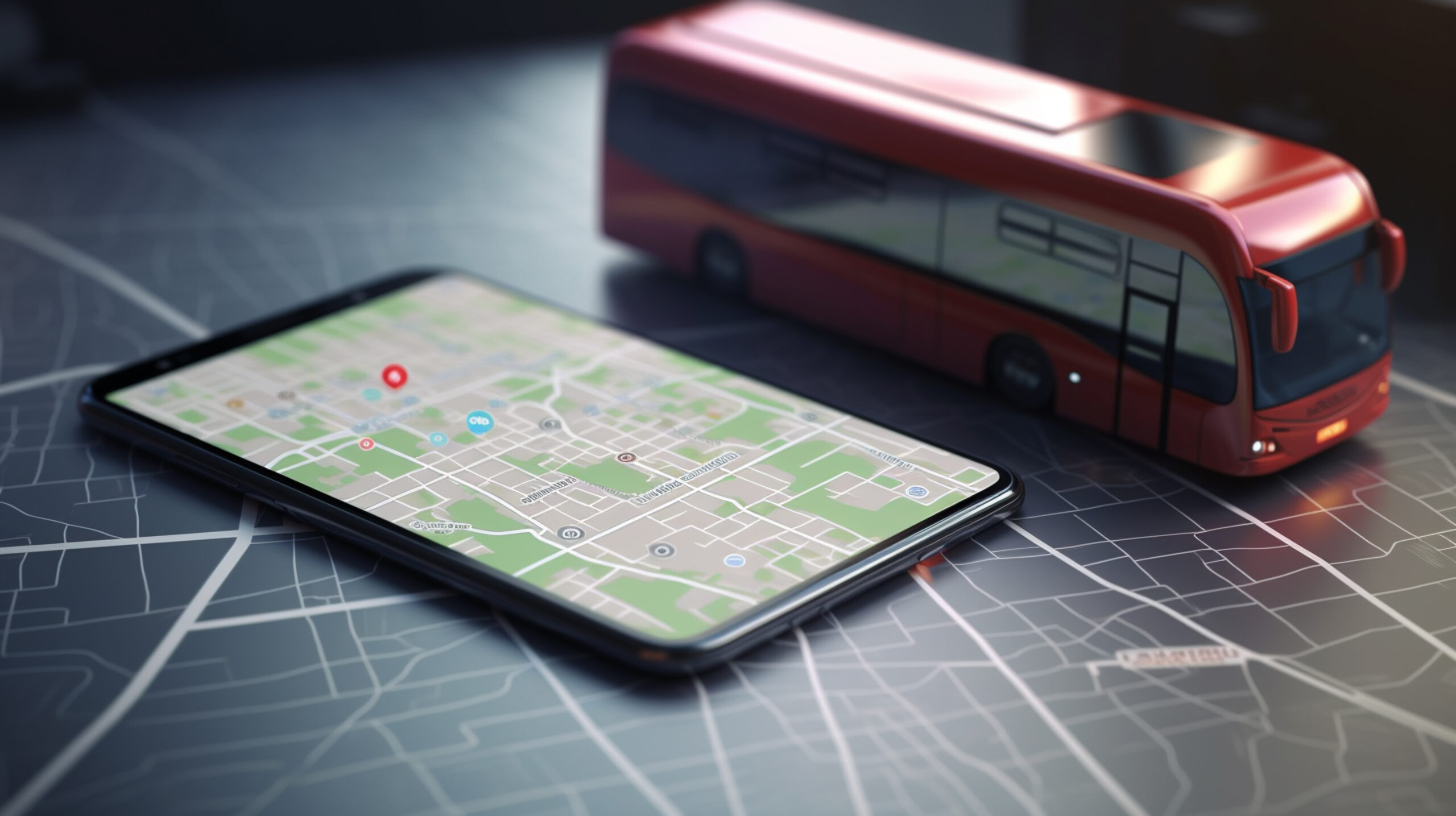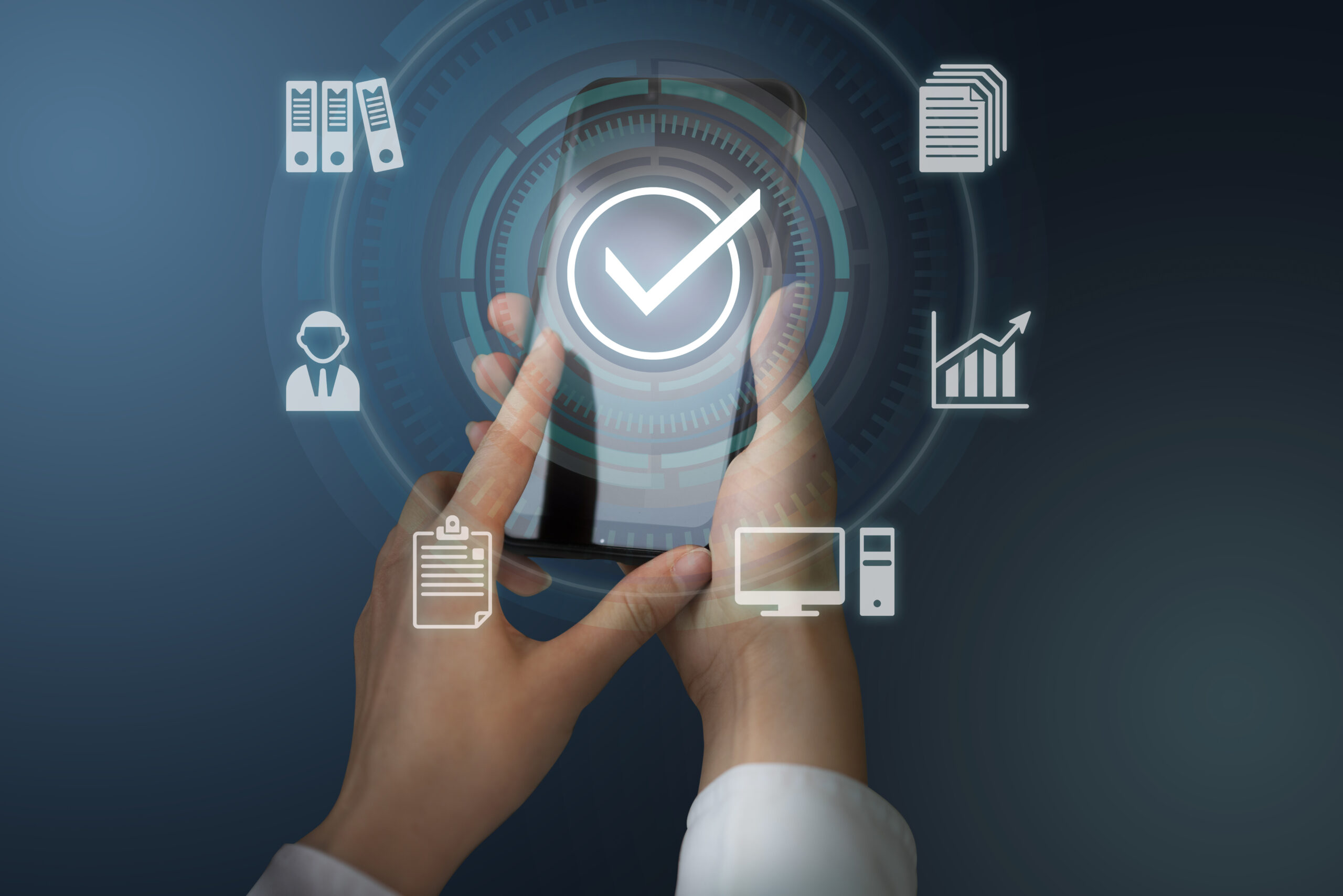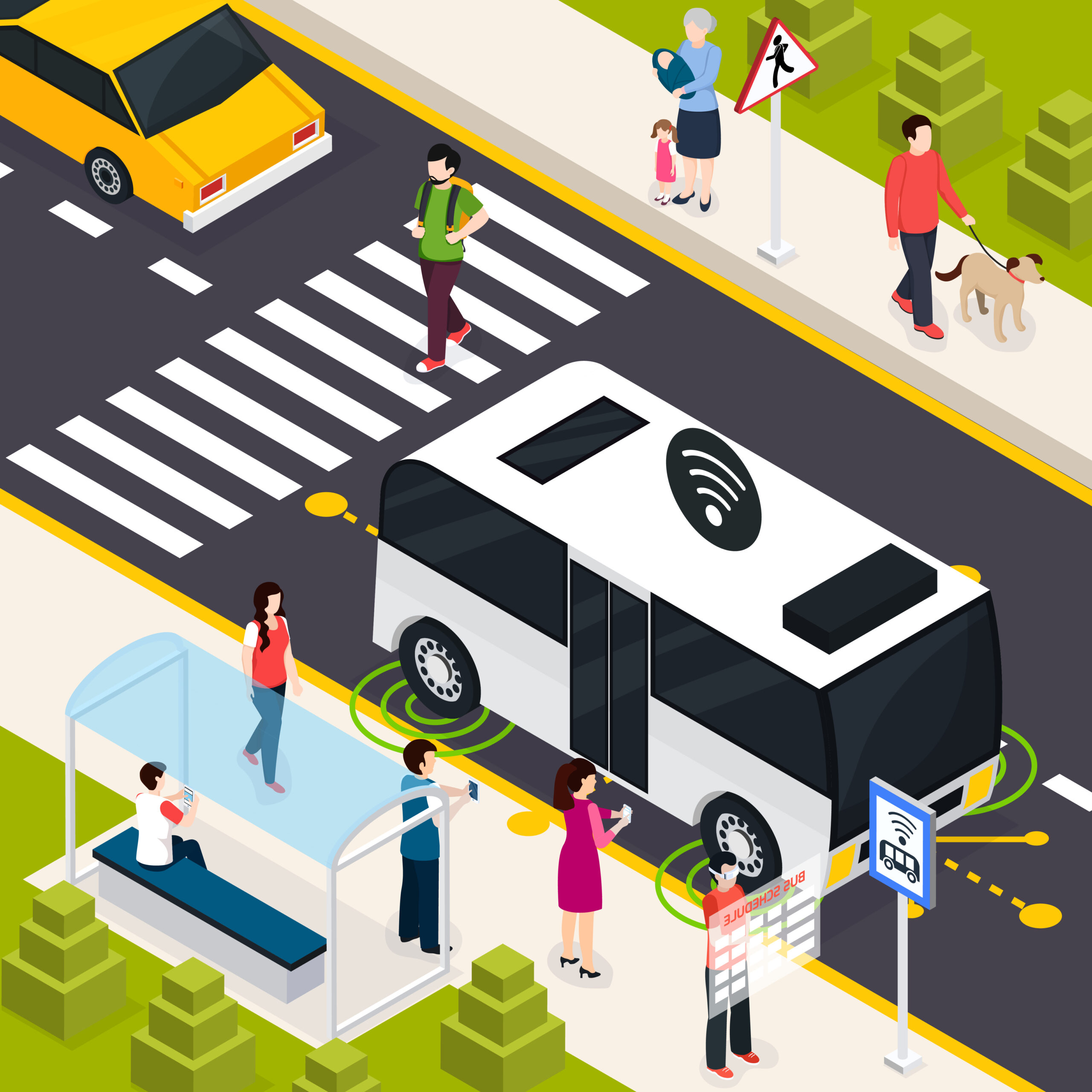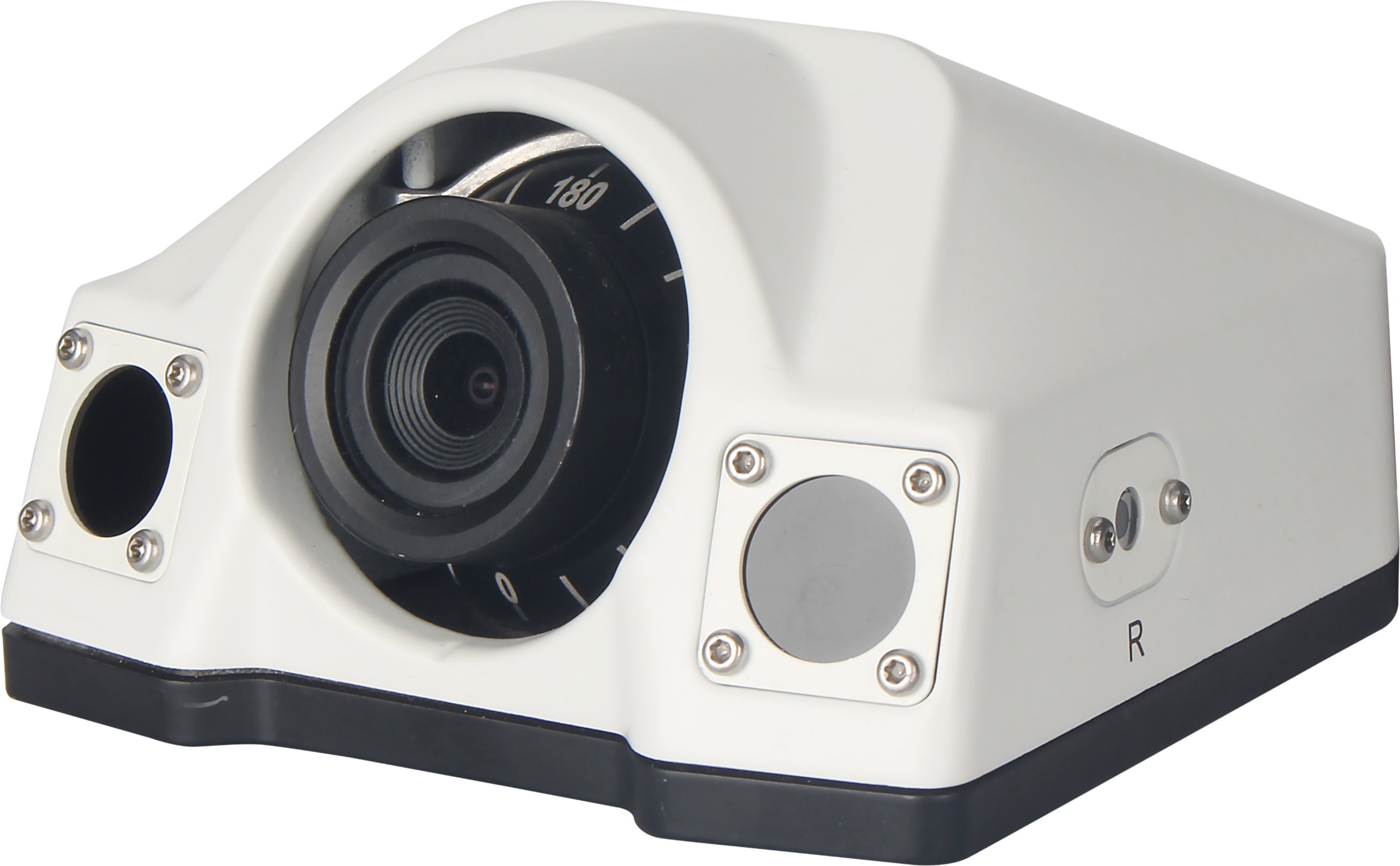-
 Automated Fare Collection
Automated Fare CollectionWith smart public transportation technologies, all kinds of transactions that can be performed with a physical card are now in your pocket! Passengers can now perform subscription transactions for their cards without having to go to the dealer. They can apply for subscription through the mobile application, and if their phones have NFC feature, they can instantly perform the subscription to the physical card. The instructions given on phones without NFC feature are carried out when the card is swiped at any validator.
Account-based ticketing offers revolutionary innovations in ticketing systems, enabling the use of a centralized data processing and management approach in transportation infrastructures. Unlike traditional card-based systems, it centrally processes passengers’ fare information and travel details and allows instant notifications. This system manages all intelligence and data management simultaneously on a central platform, in a digital account. Thus, it creates various advantages for both passengers and transportation providers.
Chief among these advantages is an improved user experience and a smoother travel process. It also enables the creation of discounted or customized tariffs through payment instruments such as contactless credit and debit cards.
It provides a more flexible structure for transportation authorities and mobility partners. Reducing the weight of physical ticketing infrastructure and ticket media management reduces operational and investment costs. Centralized data management enables dynamic pricing and improved revenue management.
In conclusion, account-based ticketing is an ideal solution for modern transportation systems.
With the Electronic Fare Collection System Solution, a wide range of sales and filling channels are at the service of passengers. With these channels, users can make payments both in cash and using EMV cards, making life in smart cities much easier.
Transportation cards can be purchased self-service from Ticketmatik, which can perform all kinds of transactions related to transportation cards 24/7. In addition, disposable tickets can also be purchased from Ticketmatik. Loading, subscription and visa transactions for transportation cards can also be carried out from Ticketmatik, and these transactions can also be made with debit and credit cards. In addition, all kinds of transactions related to transportation cards can be easily carried out from the dealers.
Payment Verification and Audit Channels, one of the Electronic Fare Collection System solutions, are equipped with state-of-the-art hardware and software to make life easier for both public transportation authorities and passengers.
Thanks to its hardware certificates, software certificates and ease of installation, ASİS Validators facilitate the collection and transmission of revenues to central software by public transport authorities in railway (train, tram, metro, turnstile), road (bus, trambus, trylebus) and maritime (turnstile) transportation.
Public transportation as well as parking, zoo
It is also used at entrances to social areas such as gardens, social facilities, sports centers, universities, museums and beaches, facilitating service and revenue tracking for municipalities and private institutions.In addition, thanks to ASİS Driver Control Panels, transportation authorities can make line and route selections of drivers in road transportation vehicles such as buses, trambuses and trylebuses, control last boarding and general boarding information, control multiple
manual tariff selection in lines with more tariffs, detection of suspicious transactions with photo display and notification to the central software, notification to the center in case of emergency, mutual messaging with the central software, making voice announcements with a single click provides.ASİS validator provides data security with hardware and software (AES, DES, 3DES, RSA encryption methods, ISO 14443 A/B and EMV L1, L2 – Mastercard PayPass and Visa payWave) and facilitates the lives of public transportation passengers thanks to its capabilities and variety of payment methods. Passengers can travel with single-use tickets, smart cards, credit cards, debit cards, mobile wallets, NFC and QR codes (both from the smartphone screen, ticket and validator screen) and Account-Based Ticketing and Card-Based Ticketing technologies.
The Clearing Settlement Method, which is one of the most important pillars of electronic fare collection systems in smart public transportation, stands out as the portal where Financial, Progress & Revenue, Filling, Boarding and Transaction Reports are checked. It can be accessed from the web platform as well as from mobile devices.
Reports are prepared consistently within themselves and are displayed in master-detail. Reports can be displayed on a record basis, daily, weekly, monthly, monthly, annually and cumulatively, can be scheduled and automatically prepared and sent via e-mail.
The order of the columns in the report query results can be edited, grouped, removed on a user basis and these templates can be saved separately.
Asis works with a number of markets, financial institutions and banks to facilitate balance top-ups for passengers in smart public transportation.
Passengers can easily top up their cards by selecting a city and entering their card number information on the relevant screens of İşbank Maximum Mobile, Yapı Kredi Mobile and Papara applications, thus saving time.
At this point, when users enter the applications and want to load their cards, the relevant services, which were previously established with mutual work, communicate with each other in the background, the amount to be loaded to the card is transmitted to Asis, and after the necessary checks, the balance is loaded to the card as an instruction by Asis. When the passengers then swipe their cards at the validator, the loading instruction is automatically loaded to the card.
In addition to these channels, since August 2021, passengers can go to Migros stores to top up their transportation cards. At Migros stores, the user can go to the cashier, place his/her card on the POS device in the cash registers and pay the amount he/she wants to load. If the transaction is interrupted for any reason after a certain point, the loading is defined as an instruction to the card, and when the transportation card is swiped at the validator, the pending loading instruction is loaded to the card.
When using public transportation, payments can be made through mobile applications as well as physical cards. However, more and more developing technologies are now enabling other payment channels to be created. Contactless bank cards stand out as one of these payment methods. Public transportation vehicles can now be used using contactless bank cards.
Related Products
-
 Public Transportation Fleet ManagementPublic Transportation Fleet Management System is designed for real-time and retrospective monitoring of vehicles, ensuring passenger and driver safety and reducing costs. With the Public Transportation Vehicle Management System, vehicle routes can be defined and fleets can be fully controlled by easily planning the trips to be made collectively. The system, which enables monitoring the entire fleet on the map at a single glance, allows the vehicles belonging to the fleet to be grouped or individually viewed on the map 24/7. The historical movements of the vehicles can also be viewed on the map. It is possible to check whether the desired vehicle is traveling on the route defined during the voyage in the desired date range.Reduces operational costs by creating more efficient routes. Supports saving fuel by monitoring unauthorized vehicle locations. It helps managers in vital situations by displaying which vehicles are passing through the plotted location at the desired time. Thanks to vehicle tracking reports, it creates convenience in planning trips. Allows monitoring of driver activity by tracking the time spent at stops.
Public Transportation Fleet ManagementPublic Transportation Fleet Management System is designed for real-time and retrospective monitoring of vehicles, ensuring passenger and driver safety and reducing costs. With the Public Transportation Vehicle Management System, vehicle routes can be defined and fleets can be fully controlled by easily planning the trips to be made collectively. The system, which enables monitoring the entire fleet on the map at a single glance, allows the vehicles belonging to the fleet to be grouped or individually viewed on the map 24/7. The historical movements of the vehicles can also be viewed on the map. It is possible to check whether the desired vehicle is traveling on the route defined during the voyage in the desired date range.Reduces operational costs by creating more efficient routes. Supports saving fuel by monitoring unauthorized vehicle locations. It helps managers in vital situations by displaying which vehicles are passing through the plotted location at the desired time. Thanks to vehicle tracking reports, it creates convenience in planning trips. Allows monitoring of driver activity by tracking the time spent at stops.In smart cities, information is the most important issue when planning a journey using public transportation, making the journey or determining the route, organizing the timetable.
Asis Elektonik helps to ensure that all planning is done correctly by using information and data with its end-to-end technologies.
With our Vehicle Tracking and Management System, the locations of public transportation vehicles are constantly recorded and controlled for security and to control the status of public transportation. The data collected from the devices in all vehicles are processed and presented as information to passengers at the stop, line information is shared instantly for passengers, or violations can be seen in trip management and correct planning can be made.
The most important thing needed to travel using public transportation in big cities is planning and knowledge. That is why Asis Elektronik produces technologies that will save time for passengers and offer end-to-end solutions for more comfortable and practical public transportation. Sometimes passengers wait for a vehicle at a stop for minutes and unfortunately the vehicle does not pass that stop. In order to prevent such situations, the route information and location information of the vehicles can be compared and it can be checked whether the journey on the determined route is carried out correctly or whether there is any violation. Unplanned fast or slow movements of vehicles are also monitored and automatic warnings are generated when necessary. Thus, a more comfortable journey is provided for passengers.
Travel planning in smart cities is becoming very easy with new generation technologies. Thanks to the vehicle tracking management system, passengers can see the lines passing through all stops and the travel routes of the lines. In addition, by following the live locations of public transportation vehicles, they can plan the entire journey from their current location to their destination, either directly or with transfers.
Related Products
-
 Mobile Application Solutions
Mobile Application SolutionsWith ever-evolving technological solutions, users now prefer the simplest and fastest. The mobile application solution gives passengers the opportunity to top up their balance, visa the card, create a subscription order and apply for a smart card, regardless of time and place. In this way, passengers can carry out all the transactions they need to do with their smart transportation cards without having to call a card center or a refill dealer and without waiting in line. Reduced queues make it easier to manage card transaction operations and reduce costs.
Passengers can select their current and future destinations and choose from the route options offered by the mobile application thanks to the “How Do I Get There?” feature. With the foreign language option, even users who are unfamiliar with the city can easily reach everywhere using this feature. Through the user-friendly interface of the mobile application, they can access information on which bus will arrive at their location in how many minutes, and can even view the location of the buses on the map.
With smart public transportation technologies, all kinds of transactions that can be performed with a physical card are now in your pocket! Passengers can now perform subscription transactions for their cards without having to go to the dealer. They can apply for subscription through the mobile application, and if their phones have NFC feature, they can instantly perform the subscription to the physical card. The instructions given on phones without NFC feature are carried out when the card is swiped at any validator.
Smart public transportation technologies are being developed to make life easier for passengers in many areas. Being able to apply for a card without going to a dealer stands out as one of these conveniences. In big cities, there is often a shortage of time and it becomes difficult to go to the dealer and make card transactions. Card application process can be done easily without going to the dealer through Asis Elektronik mobile application solutions.
vUntil now, the general habit has been to take the physical card to the vendors and top up the card. Loading points are not always available everywhere, and passengers may realize that their balance is insufficient just as they are about to board the bus. Asis Elektronik has considered all these data, information and scenarios with all its technologies.
With smart public transportation technologies, travel planning has become very easy. With the widespread use of smart cell phones and the internet, it is possible to learn how to get from point A to point B in the easiest and fastest way. The How-to feature of mobile application technology is also a system prepared for travel planning.
Related Products
-
 Terminal Management SystemTerminals maintenance just in time
Terminal Management SystemTerminals maintenance just in timeWith this system, the health of terminals can be monitored and alarms can be generated according to specified rules. Terminal maintenance can be performed on time, helping to reduce costs by using the equipment for a longer period of time.
All terminals under 24/7 controlAll terminals are under 24/7 control thanks to SMS or e-mail notifications of the generated alarms to the administrators.
Media controls from a single systemWith the Terminal Management System, it is possible to send audible and visual alerts to all devices with media display capability and to manage media as desired.
In smart public transportation, there are special rule sets created for terminals. According to these rule sets, both health and usage management is performed. Remote or close interventions can be made to the devices with the alarms generated, and the alarms generated are transmitted to the user as e-mail, sms and web notifications.
Many terminals in the field for smart public transportation receive versions and/or configurations at the same time or at predetermined time intervals. This process is very fast with the new technological infrastructures used. At the same time, whether the versions or configurations sent to the terminals are applied or not can be sent to the system by the device and reported.
While terminals, one of the main elements of public transportation in smart cities, include devices used in public transportation, terminal health is also becoming important.
The health status of the terminals in the field may change according to certain usage numbers and times. Special warnings and health management are made for terminals according to predetermined rule sets. When necessary, terminals are closely intervened and their health status is controlled.
In intelligent public transportation systems, there are many devices in the vehicle and at different points outside the vehicle. Thousands of data flow from these devices every day. New generation connectivity solutions come into play to manage all of this information from the center. The Terminal Management System enables live or historical monitoring, reporting and management of information from all devices, from ticket machines to turnstiles, so that all devices are kept under control.
Related Products
-
 Passenger Information SystemsWhen will the public transportation you want to use arrive? How to travel to the desired destination using public transportation? How do you know the stop you want to get off at?
Passenger Information SystemsWhen will the public transportation you want to use arrive? How to travel to the desired destination using public transportation? How do you know the stop you want to get off at?Passengers are the ones who need information the most in public transportation. For more comfortable and sustainable public transportation, Asis develops its technologies to provide this information to passengers. It produces end-to-end solutions that will increase passenger satisfaction in smart cities, and brings passengers together with all the information they need at stops, inside vehicles and on their mobile phones with the Passenger Information System.
Smart Stops are one of the most important pillars of the Passenger Information System. Smart Stops enable passengers to see the lines passing through the stop they are at, and to access information on how many minutes later the vehicle they are waiting for will arrive at the stop. Thus, the problem of passengers missing vehicles or spending time at the stop without knowing how many minutes they have to wait for a vehicle is eliminated and passenger satisfaction increases.
In-vehicle Passenger Information System is a data service that passengers benefit from while using the transportation vehicle. During the journey, passengers are informed visually and audibly which stop they are at and the next stop information. Thus, passengers do not miss the stop they want to get off or do not have to follow all the stops. In addition, the screens of these systems can also be used for media management purposes such as advertisements and posters.
The mobile application is a part of the Passenger Information System as the information system in passengers’ pockets. Passengers can access the information they want with a single click by using the mobile application on phones with IOS and Android operating systems. All kinds of data covered by the system, such as how to go from one point to another, line information, next stop information, etc., come to their pockets with the application.
In-vehicle Passenger Information System is a data service that passengers benefit from while using the transportation vehicle. During the journey, passengers are informed visually and audibly which stop they are at and the next stop information. Thus, passengers do not miss the stop they want to get off or do not have to follow all the stops. In addition, the screens of these systems can also be used for media management purposes such as advertisements and posters.
The mobile application is a part of the Passenger Information System as the information system in passengers’ pockets. Passengers can access the information they want with a single click by using the mobile application on phones with IOS and Android operating systems. All kinds of data covered by the system, such as how to go from one point to another, line information, next stop information, etc., come to their pockets with the application.
In the flow of life in cities, our time becomes very important. In smart cities, public transportation technologies produce many new technologies for passengers to plan their time. Smart Stop technology, which will help passengers plan their time correctly, stands out as one of them. Smart Stops enable passengers to see the lines passing through the stop they are at, and to access information on how many minutes later the vehicle they are waiting for will arrive at the stop. Thus, the problem of passengers missing vehicles or spending time at the stop without knowing how many minutes they have to wait for a vehicle is eliminated and passenger satisfaction increases.
In-vehicle Passenger Information System is a data service that passengers benefit from while using the transportation vehicle. During the journey, passengers are informed visually and audibly which stop they are at and the next stop information. Thus, passengers do not miss the stop they want to get off or do not have to follow all the stops. In addition, the screens of these systems can also be used for media management purposes, and displays such as advertisements and posters can be made easily.
Related Products
-
 Vehicle Video and AI SolutionsHow to ensure safety in public transportation? What can be done in adverse situations?
Vehicle Video and AI SolutionsHow to ensure safety in public transportation? What can be done in adverse situations?With In-Car Camera Systems, one of the technologies developed by Asis Electronic and Information Systems, all vehicles are equipped with cameras that capture video from both inside and outside from the desired angle. Cameras can be easily accessed and controlled in any unfavorable situation. With this system, video images are recorded, instantly and retrospectively monitored and stored.
Vehicle tracking systems are defined as technological solutions used to monitor and manage the location, movement and status of vehicles in real time.
These systems use GPS (Global Positioning System) technology to accurately track the location of vehicles and transmit this data to a central server. This information can then be accessed by fleet managers or vehicle owners through software interfaces to view routes, speed, idling times and other relevant data.
Araç takip sistemleri gelişmiş filo verimliliği, daha az yakıt tüketimi, daha iyi rota optimizasyonu, gelişmiş sürücü güvenliği ve araç bakım programlarını izleme yeteneği gibi faydalar sunmaktadır. Genel olarak, bu sistemler operasyonel etkinliği artırmaya ve taşımacılığa dayanan işletmeler için maliyetleri azaltmaya yardımcı olmaktadır.
Driver Analytics Systems are advanced technologies used to assess and analyze the behavior and condition of drivers while driving.
These systems use a combination of sensors, cameras and artificial intelligence algorithms to monitor various aspects of the driver’s behavior, with physiological indicators such as facial expressions, eye movements, head position and even heart rate and fatigue levels.
The collected data is processed in real time to detect signs of drowsiness, distraction, aggressive driving and other risky behaviors.
If relevant behaviors are detected, the system can provide warnings to both the driver and fleet managers, helping to prevent accidents and improve overall driver safety.
Driver Analytics Systems play an important role in reducing accidents, improving road safety and promoting responsible driving practices.
Passenger counting systems are technologies used to accurately track and record the number of passengers boarding and alighting from vehicles such as buses, trains and trams.
Thus, it can be easily monitored at what time and on which days and on which lines there may be congestion.
Thanks to passenger counting systems, advanced transportation planning can be made, thus enabling more efficient use of resources.
Blind Spot Detection Systems are automotive safety technologies designed to help drivers identify vehicles or obstacles that may be in their blind spots, areas not easily visible through mirrors or windows.
These systems use a combination of sensors, cameras and radar to monitor areas around the vehicle.
When a vehicle enters the blind spot zone, the system alerts the driver, typically through visual or auditory cues such as flashing lights or warning sounds.
Blind Spot Detection Systems contribute to reducing the risk of collisions during lane changes or maneuvers by providing timely warnings about potential hazards.
Panic Alarm System sends an instant alarm to the system by pressing the panic button in situations that may cause panic to the driver or passengers. In this way, by monitoring the in-vehicle camera images in the vehicle where the button is pressed, the system can immediately intervene in the emergency situation and ensure driver and passenger safety.
Of course, accidents in public transportation are events that no one wants. There are various features in the smart camera system for this. The blind spot detection system notifies the driver of vehicles in the blind spot with audible warnings. Thanks to the cameras in the front section, if there is a pedestrian passing in front of the vehicle, the driver is immediately warned with an audible warning. If an unwanted accident occurs, the cause of the accident can be determined thanks to the cameras inside and outside the vehicle.Technologies developed for security in public transportation are very important.
BSD (Blind Spot Detection), also known as “Blind Spot Detection” in Turkish, is an automotive safety technology. This system is used to detect other vehicles in the driver’s blind spots (usually on the sides and rear of the vehicle). The BSD system helps prevent accidents by alerting the driver to the presence of other vehicles that may pose a danger.
The blind spot detection system works through sensors or cameras that are usually mounted on the side mirrors of the vehicle. These sensors or cameras monitor the sides and rear of the vehicle and detect approaching vehicles. If a vehicle enters a set distance to the sides or rear of the vehicle in a way that distracts the driver, the system warns the driver.
Warnings are usually visual or audible to attract the driver’s attention. For example, a warning light in the side mirrors may illuminate or a warning tone may sound inside the vehicle. Some vehicles with the BSD system may also display a warning icon in the rearview mirror or on the instrument panel.
Blind spot detection helps prevent accidents when changing lanes or maneuvering by keeping the driver aware of the presence of other vehicles.
In smart cities, safety is as important as comfort in public transportation. Bus panic button systems, one of the technologies developed for this purpose, are a security measure that passengers can use to call for help in emergencies. With these systems, an emergency signal can be sent to the bus driver or the central control unit of the bus through a button placed inside the bus. Generally, in case of an emergency, passengers can press the panic button to notify bus personnel or external assistance teams.
Features:
Buttons Panic buttons placed inside the bus are usually located in locations that are easily accessible and visible in case of an emergency. Passengers can send an emergency signal by pressing the button. Audible or Visual Warning: When the panic button is pressed, the system usually initiates an audible and/or visual alert inside or outside the bus. This can help bus staff or other passengers to recognize the situation. Automatic Location Detection: Some panic button systems can automatically detect the location of the bus when an emergency signal is sent. This allows emergency responders to reach the scene quickly. Warning Messages: Voice alerts or automated messages can often be sent to notify the bus driver or the central control unit of the bus of an emergency. Centralized Control and Monitoring: Some systems can monitor the status of panic buttons on buses from a central control panel. This allows bus companies or authorities to quickly identify emergencies and take appropriate action.Public transportation vehicles can be quite crowded on some days and hours. In this case, passenger counting system technologies come into play to provide a more convenient and comfortable experience for passengers.
Bus passenger counting systems are technological systems that automatically monitor and record passenger traffic on buses. These systems detect the movement of passengers on and off the bus through cameras or other sensors placed inside the bus. Passenger counting systems provide bus companies and public transportation authorities with real-time and accurate data on passenger traffic. This data can be used to analyze passenger flow, optimize routes, improve service quality and increase passenger satisfaction.
Panic Alarm System sends an instant alarm to the system by pressing the panic button in situations that may cause panic to the driver or passengers. In this way, by monitoring the in-vehicle camera images in the vehicle where the button is pressed, it can immediately intervene in the emergency situation and ensure driver and passenger safety.
Blind Spot Detection Systems are automotive safety technologies designed to help drivers identify vehicles or obstacles that may be in their blind spots, areas not easily visible through mirrors or windows.
These systems use a combination of sensors, cameras and radar to monitor areas around the vehicle.
When a vehicle enters the blind spot zone, the system alerts the driver, typically through visual or auditory cues such as flashing lights or warning sounds.
Blind Spot Detection Systems contribute to reducing the risk of collisions during lane changes or maneuvers by providing timely warnings about potential hazards.
Public transportation vehicles can be quite crowded on some days and hours. In this case, passenger counting system technologies come into play to provide a more convenient and comfortable experience for passengers.
Bus passenger counting systems are technological systems that automatically monitor and record passenger traffic on buses. These systems detect the movement of passengers on and off the bus through cameras or other sensors placed inside the bus. Passenger counting systems provide bus companies and public transportation authorities with real-time and accurate data on passenger traffic. This data can be used to analyze passenger flow, optimize routes, improve service quality and increase passenger satisfaction.
Components:
Cameras Cameras installed inside the bus detect the movement of passengers getting on and off the bus. Optical sensors, infrared sensors or simply cameras can be used for this purpose.
Data Processing Unit: This is the unit that processes and analyzes data from sensors or cameras. This unit is usually a computer or embedded system located on or near the bus.
Passenger Counting Algorithm: Passenger counting systems detect people inside or outside the bus by analyzing sensor or camera data. Special algorithms are used to process this data and accurately determine the number of passengers.
Data Recording and Transmission: Passenger counting systems can record and transmit the collected data, usually to a server or a central database. This allows bus companies or public transport authorities to monitor passenger traffic in real time.
Reporting and Analysis Interface: Bus companies or authorities can have a user-friendly interface to access collected data, generate reports and analyze data. This interface can be used to manage passenger traffic and optimize public transport services.
Another safety technology in public transportation is the so-called Driver Status Monitoring (DSM) system. These systems aim to increase driving safety by monitoring the driver’s attention and driving status.
The DSM system usually operates using an array of sensors and cameras. Cameras and sensors that monitor the driver’s face, eyes, head movements and body state are strategically positioned inside the vehicle. This data is analyzed to assess the driver’s attention level, alertness and driving state.
DSM system;
Fatigue and Drowsy Driving: Warns if the driver’s eyes close or blink frequently. This can help prevent accidents if the driver is asleep or distracted.
Distracted Driving: Warns if the driver takes his/her eyes off the road for a long time or looks away from the vehicle.
Health Problems: Some DSM systems try to detect sudden health problems of the driver. For example, the system may alert when a driver shows signs of fainting.
Driving Style Monitoring: Some DSM systems can monitor a driver’s aggressive driving behavior or careless maneuvers and issue warnings where appropriate.
In public transportation, each line has a predetermined route. All vehicles are required to follow this predetermined route during their journeys.
The vehicle tracking system, one of the Smart City technologies, was developed to determine whether public transportation vehicles follow their routes correctly and whether there are any violations.
Thanks to the vehicle tracking system, the route information of the bus can be accessed by matching the cameras and GPS data. Thus, arrangements can be made to prevent violations.
A mobile NVR (Network Video Recorder) is a device used to record and store images from security cameras. These devices are usually portable and flexible to use, can be accessed over a network and can be remotely monitored. Most Mobile NVRs support wireless connectivity options such as Wi-Fi or 4G. This eliminates the need for cabling between the camera and the NVR and provides installation flexibility. Mobile NVRs often offer remote access over the internet. This allows users to connect to the NVR from anywhere, on any device, to view live images and access recordings. Storage capacity determines how long the device can record. Mobile NVRs typically use internal hard disk or external storage devices.
Mobile NVRs usually support different types of security cameras. This gives users the flexibility to choose the cameras that suit their needs.
The security of the recorded data of surveillance cameras is important. Mobile NVRs often come with features such as data encryption, password protection and other security measures.
Mobile NVRs are ideal for applications that require portability, often to meet temporary security needs. For example, they can be used in temporary venues such as construction sites, events, portable stores or in vehicles.
Related Products








